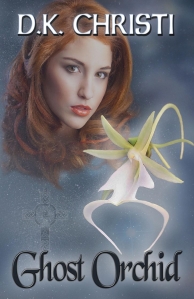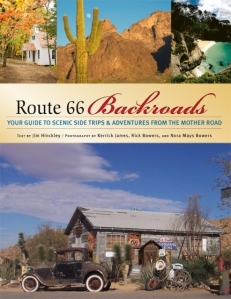D.K. Christi’s debut novel Arirang, a romantic adventure that spans seven continents, conveys an underlying theme that “life happens when you are planning something else.” In Christi’s shorter works such as Chalk, The Magic Box, and The Valentine , exclusive to Amazon Shorts , themes of friendship surviving tragedy, love conquering adversity, and the triumph of the human spirit over the hardships of life serve to uplift and inspire. Discover a new voice in fiction and through her stories, perhaps discover something new about yourself.
Shelagh: Welcome D. K., please tell everyone a little about yourself:
 D.K.: My roots are in Michigan where my family lives and I visit each year, preferring to drive so I can stop in the Georgia mountains and hike a little. I also spent significant youthful years in California, the dream land for a midwestern girl trying to get out of the snow and become a “surfer girl.” Once I started traveling, I didn’t stop, living an average of 3 years wherever I landed, job or home. These travels included international work in Europe and Asia and blue water sailing in the Caribbean. Experiences in foreign cultures and living “on the economy” provide insights that I try to share with readers. I have had a profession as an editor and writer for state departments of education and even a stint as a political intern in Washington, D. C. Right now, I live in Florida where I enjoy the Gulf and the Everglades for contrast, but miss hills.
D.K.: My roots are in Michigan where my family lives and I visit each year, preferring to drive so I can stop in the Georgia mountains and hike a little. I also spent significant youthful years in California, the dream land for a midwestern girl trying to get out of the snow and become a “surfer girl.” Once I started traveling, I didn’t stop, living an average of 3 years wherever I landed, job or home. These travels included international work in Europe and Asia and blue water sailing in the Caribbean. Experiences in foreign cultures and living “on the economy” provide insights that I try to share with readers. I have had a profession as an editor and writer for state departments of education and even a stint as a political intern in Washington, D. C. Right now, I live in Florida where I enjoy the Gulf and the Everglades for contrast, but miss hills.
Shelagh: When did you first start writing?
D.K.: I started writing in my youth, keeping meticulous diaries under lock and key that were as much fantasy thought as reality. I basically write essays, commenting on life. Recently, I have turned those comments into fiction.
Shelagh: What goals did you set yourself? Is there a message you want readers to grasp?
D.K.: “LIfe is what happens when you plan for something else.” Amazon.com actually said it best when their editor described my stories as characters rising above adversity, overcoming life’s traumas and ecking out a new beginning. That’s the thought I wish to convey. Every challenge has a gift; we just need the capacity to recognize when it comes. I want readers to recognize their own selves in the characters, their agonies and their ecstasies, and perhaps find comfort in the resolution of their challenges.
Shelagh: Is your latest book part of a series or stand alone?
 D.K.: At the moment, Ghost Orchid seems to stand alone; however, the ending begs for a sequel. Neev is the main character whose life is examined and changed through the magic of the ghost orchid; yet, the ending leaves the reader with the desire to know more about the characters who shaped her destiny, one in particular. She begins that story as hers ends. One family’s loves, lies and redemption are woven through the fabric of the Everglades as photographers search for the perfect subject in the perfect light and find themselves. Neev’s search unfolds as a mystery, one coincidence at a time, under the mystical magic of the ethereal ghost orchid. Recently, I also have short stories published in several anthologies: “Rose’s Question” in The World Outside My Window; “The Ice Storm” in Romance of My Dreams, and “The View From the Balcony” in Romance of My Dreams II.
D.K.: At the moment, Ghost Orchid seems to stand alone; however, the ending begs for a sequel. Neev is the main character whose life is examined and changed through the magic of the ghost orchid; yet, the ending leaves the reader with the desire to know more about the characters who shaped her destiny, one in particular. She begins that story as hers ends. One family’s loves, lies and redemption are woven through the fabric of the Everglades as photographers search for the perfect subject in the perfect light and find themselves. Neev’s search unfolds as a mystery, one coincidence at a time, under the mystical magic of the ethereal ghost orchid. Recently, I also have short stories published in several anthologies: “Rose’s Question” in The World Outside My Window; “The Ice Storm” in Romance of My Dreams, and “The View From the Balcony” in Romance of My Dreams II.
Shelagh: What’s the hook for the book?
D.K.: Death is the end. Or is it? A tragic accident opens Ghost Orchid and sets the stage to search for an answer to that age old question: Is love eternal? A mystical and exotic ghost orchid watches from its perch high in the cypress canopy as a mystery unfolds, one coincidence at a time.
Shelagh: How do you develop characters and create the settings?
D.K.: Their traits fit the circumstances in which they dwell. They are borrowed and reworked from all the people I have know, about whom I have read, and those I’ve imagined. Neev is the daughter I never had, molded from the clay of men and women whose personalities left an impression.
Settings come from the places where I have lived and traveled. They are real to me in every respect though they sometimes require adjusting with research to make up for imperfect memories or documentation.
Shelagh: Who is the most unusual or most likeable character?
D.K: Since I have already given away my secret that I always wanted a daughter, I vote for Neev. However, Roger has his charm and Mel has depth worth examining and loving.
Shelagh: Do you have specific techniques to help you maintain the course of the plot?
D.K.: I’ll use the word processing outline features to give me skeletons of the manuscript and check for anomolies.
Shelagh: Do you have a specific writing style or preferred POV?
D.K.: My preferred POV is first person and in the present tense. Publishers do not like either, especially in new authors. Therefore, I have switched to third person, past tense. When I am famous, I will return to first person, present tense.
Shelagh: How does your upbringing affect your writing?
D.K.: I have a very eclectic personal history with many twists and turns, traumas and joyful events. Therefore, I give my characters a strong dose of emotional appeal; readers have expressed great dislike for a character or been stunned by a stupid decision. One reader said she actually shouted out loud while reading Arirang: The Bamboo Connection, “no, don’t be so stupid!”- Another reader complained that a short story could not possibly be a romance because, “He walked away at the end. How could he do that to her? How could he just walk away?” As though I was supposed to give her some release for her pain at his behavior.
Shelagh: Please share the best review that you’ve ever had.
D.K.: I think I hold onto the Amazon.com review because it says so much in such a few words:
“D.K. Christi’s debut novel Arirang, a romantic adventure that spans seven continents, conveys an underlying theme that “life happens when you are planning something else.” In Christi’s shorter works such as Chalk, The Magic Box, and The Valentine , exclusive to Amazon Shorts , themes of friendship surviving tragedy, love conquering adversity, and the triumph of the human spirit over the hardships of life serve to uplift and inspire. Discover a new voice in fiction and through her stories, perhaps discover something new about yourself.”
Shelagh: What are your current projects?
D.K.: I am working on a short story anthology, a major work, The Virgin Odyssey, about blue water sailors with stories in each craft that are shared in ports along their journey, a sequel to Ghost Orchid, and a special story about the Civil War inspired by my great grandfather’s escape from a prison camp.
Shelagh: Where can folks learn more about your books and events?
D.K.: website: http://www.dkchristi.com
twitter: http://www.twitter.com/dkchristi
Publisher: http://www.lldreamspell.com
I blog at www.redroom.com and www.amazon.com
Booktour.com includes events and there’s always Google.
ebook versions of Ghost Orchid are found at Mobipocket, Fictionwise and Kindle; print coming soon.
Arirang: The Bamboo Connection is in print and Kindle at Amazon.com where several short stories are also found in Amazon Shorts. The anthologies are also at Amazon.com in print and Kindle. All online bookstores carry my books, and anthologies containing my short stories.
























 Stumble It!
Stumble It!

